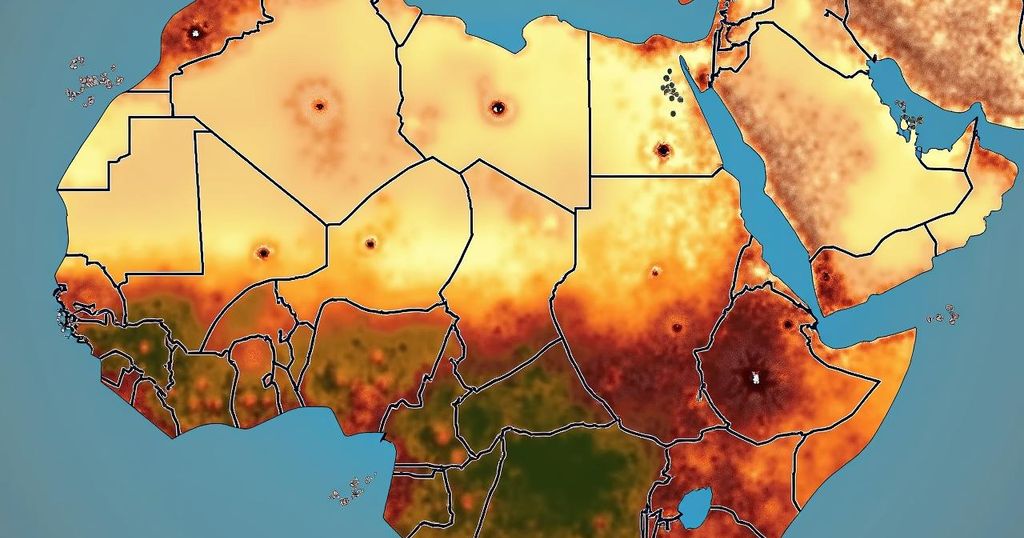The 2023/2024 El Niño has led to severe drought in southern Africa, affecting millions and resulting in food insecurity, malnutrition, disease outbreaks, and water shortages. Approximately 23 million people are food insecure, with urgent humanitarian assistance needed. The situation is exacerbated by existing health crises and climate change factors, necessitating immediate action to support affected populations.
The ongoing 2023/2024 El Niño phenomenon has precipitated disastrous drought conditions across southern Africa, marked by delayed rainfall, prolonged dry spells during the growing season, and soaring temperatures. This current El Niño is notably the most severe in 40 years, exacerbating challenges for populations already grappling with adverse agricultural yields and deteriorating economic conditions. The repercussions have included acute drought, pronounced food deficits, insufficient clean water access, disease outbreaks, and significant livestock losses. According to national assessments and FEWS NET, maize harvests throughout the region have fallen drastically below their five-year averages due to this historical El Niño-triggered drought. Currently, an estimated 23 million individuals are experiencing severe food insecurity, particularly in Malawi, Zambia, Zimbabwe, and Mozambique. As the lean season approaches, it is projected that between 14.0 and 14.9 million people will require immediate humanitarian assistance from October to December 2024. Six nations—Botswana, Lesotho, Malawi, Namibia, Zambia, and Zimbabwe—have declared national drought disasters. Additionally, Angola and Mozambique are facing critical challenges, with around 1.8 million and 3.3 million people respectively predicted to be food insecure. The malnutrition crisis is dire, as projections indicate that over two million children will present with acute malnutrition, over half a million of whom will endure severe wasting. As a result of these extreme climatic shocks, thousands have been displaced, while the region is also battling disease outbreaks and scarce water supplies, significantly affecting agricultural productivity. This drought occurs amidst ongoing vulnerabilities to cholera and measles epidemics, with the added threat of mpox potentially diverting vital resources away from drought relief efforts in certain areas. The drought has intensified an already critical cholera epidemic, particularly in Malawi and Mozambique, where water shortages continue to impede efforts for improved hygiene and sanitation. The ramifications of drought extend beyond immediate survival, increasing the risks of HIV transmission, exacerbating mental health crises, and escalating gender-based violence, thus underscoring the urgent necessity for bolstered preparedness and response strategies. Additionally, the collective impacts of El Niño events, cholera outbreaks, civil unrest, and climate change have severely challenged health systems across southern Africa, hampering access to essential and life-saving reproductive health services. Climate change and disasters have driven over one million individuals to seek internal displacement, particularly from Malawi, Mozambique, and Zimbabwe.
Southern Africa is currently facing one of the most unprecedented drought crises linked to the El Niño phenomenon, which has historically led to severe climatic disruptions in the region. The impacts are particularly felt in agricultural sectors, where erratic weather patterns contribute to food insecurity and undermine economic stability. The interplay of worsening weather conditions, ongoing health crises such as cholera, and socio-economic challenges are creating a perfect storm that puts millions at risk, particularly vulnerable populations such as children and women. Understanding the scope and implications of these events is vital for informed decision-making and humanitarian responses.
In summary, the region of southern Africa is enduring an unprecedented humanitarian crisis induced by the severe 2023/2024 El Niño weather phenomenon. The drought has resulted in devastating food shortages, widespread malnutrition, and a significant risk of disease, compounded by existing health emergencies. The challenges presented necessitate immediate and sustained humanitarian efforts to mitigate the effects on vulnerable populations and ensure access to essential health services. Without urgent intervention, the compounded effects of this drought will likely lead to a deepening crisis with long-standing ramifications.
Original Source: reliefweb.int






